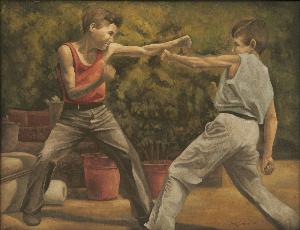Manuel Sandoval Vallarta
Manuel Sandoval Vallarta;Manuel Sandoval
Place: Mexico City
Born: 1899
Death: 1977
Biography:
Early Life and Education
Manuel Sandoval Vallarta, a Mexican physicist, was born in 1899 in Mexico City. His academic journey led him to the prestigious Massachusetts Institute of Technology (MIT), where he received his B.S. in physics in 1921 and Ph.D. in 1924.
Academic Career and Fellowship
Sandoval Vallarta joined MIT's physics faculty in 1923, eventually rising to the rank of full professor. In 1927, he was awarded a two-year Guggenheim Fellowship to study physics in Germany, where he had the opportunity to learn from renowned figures like Albert Einstein, Max Planck, Erwin Schrödinger, and Werner Heisenberg.
Notable Associations and Mentions
- Elected to the American Academy of Arts and Sciences in 1928 - Mentor to Richard Feynman and Julius Stratton at MIT - Physics professor at both MIT and the Institute of Physics at the National Autonomous University of Mexico (UNAM)
Artistic Connection: A Glimpse into Sandoval Vallarta's Art World
Though primarily known for his contributions to physics, Sandoval Vallarta's connection to the art world is intriguing. His association with various artistic movements and his influence on the development of modern art in Mexico are worth exploring.
- View Manuel Sandoval Vallarta's artworks at https://Wikioo.org/@/Manuel-SandoValta
- Discover more about the Colección Andrés Blaisten (Mexico), featuring diverse Latin American artworks, at https://Wikioo.org/Art.nsf/O/A@D3BSG9
- Explore the Museo de Arte de Orizaba (Veracruz, Mexico), a hidden gem of Mexican art, at https://Wikioo.org/Art.nsf/O/A@D3ATFB
- Learn about the Top 5 Famous Expressionism Artists of All Time at https://Wikioo.org/@@/A@D3C5X3-Top-5-Famous-Expressionism-Artists-of-All-Time
- Read about the Museum Collection of Jacques - Natasha Gelman (Mexico City, Mexico) at https://Wikioo.org/@@/A@D3BS75-The-Museum-Collection-of-Jacques-Natasha-Gelman-(Mexico-City-Mexico)
Legacy and Passing
Manuel Sandoval Vallarta passed away in 1977, leaving behind a legacy in both the scientific and artistic communities of Mexico. His influence on modern art in Mexico and his contributions to physics remain significant. Important Note: This article is based on available information from https://Wikioo.org and Wikipedia, focusing on providing a comprehensive overview of Manuel Sandoval Vallarta's life and connections to the art world.

